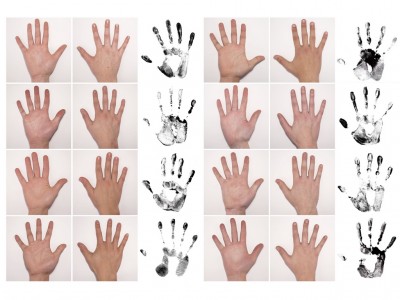Sales & Marketing Tips for Senior Services: 5 Steps to Know Your Customer’s Needs
.jpeg)
.jpeg?width=5174&name=AdobeStock_234693473%20(1).jpeg)
For the most part, everyone enjoys sharing about themselves. We can pull from our memories to tell a story or share about our personhood to help others get to know us. It’s the basics of most conversations, especially conversations with people we are meeting for the first time. “Great to meet you, Kim. Where are you from?” or “Thanks for joining today. Let’s start by sharing something unique about ourselves!” Sound familiar? Both examples are going to allow you to get to know people you’re connecting with a little bit better.
In the aging services industry, there are a lot of instances where you are meeting people for the first time with the goal to offer a solution to a challenge. In these cases, you need to dig deeper than surface-level getting-to-know-you questions. But how do you do that without being too invasive or seeming too impersonal?
Let’s circle back to the notion that generally people like sharing about themselves. But approach matters! Engaging in storytelling is a friendlier approach than filling out a questionnaire or peppering a potential client or customer with questions they’re likely tired of answering! And when the receiver has honed their listening skills, a lot can be learned in a few minutes of sharing.
5 steps for eliciting storytelling to quickly identify a need or next step with a customer or client:
- Set your “right now” goal. What is the main goal of THIS interaction? What do you need TODAY to move this to the next step? Storytelling is a process to help you build a lasting relationship, one connection or story at a time.
- Use visuals. People often recall the most vivid memories when their senses are stimulated. Use visuals to support more detailed storytelling, giving you the best chance to uncover valuable information. Have a set of images scattered on a table or a small selection of items available and ask the person to select a few images or items that connect to the information you need to know.
- Strategically craft the ask. The quality of the information shared is connected to the quality of your ask. What is the most important thing you need to know connected to your "right now" goal? Who do you need to know it about? And the ask should always connect back to the visuals. “Select a few items that help share why you're here today” “Which images best describe your dad?”
- Listen with intent. This is a time for other people to share. Focus on listening rather than responding. Do your best not to interject with your own stories. This shifts the conversation away from the intention of quickly identifying how you can best help the client or customer.
- Validate important details. When the person has shared their story, thank them, and validate a few important details connected to what you wanted to learn. Validating lets the person know you were listening and allows for continued sharing in key areas that will be helpful for you to move to the next step.
Let’s use AGE-u-cate’s FlashBack cards as an example to bring this all together. Flashback is a set of reminiscing cards providing images that span multiple generations. This resource can be used in a variety of settings with the main goal of leveraging pictures to elicit stories!
Scenario:
I am the sales director for a senior living community. I am meeting with the adult child of a potential resident for the first time today to learn more about her mom's needs and give the daughter a tour of the community.
1. "Right Now" Goal
Learn one thing about the personhood of the potential resident and highlight a connection on the community tour.
2. Visuals
I will pre-select 10 or 12 FlashBack cards with images connected to my goal and have them neatly scattered on the coffee or side table of the meeting space.
3. The Ask
After niceties, I will ask the adult daughter:
“I look forward to meeting your mom soon! Even though she is not here today, it’s important to me to get to know her as well as you. Here are some images – select a few that remind you of your mom.”
Once the daughter has selected a few images, I will ask her to share more about each image and how it connects to her mom.
4. Intentional listening
While the daughter is sharing, I am listening for key personhood statements that tell me more about how the potential resident might engage with my community. Do the stories the daughter is sharing tell me her mom is more extroverted or introverted? Am I able to pick up on any major points of interest?
5. Validation
After listening to the stories shared, I will validate what I heard connected to my goal.
“Thank you for sharing more about your mom! It sounds like she is very active in her community. How nice that she can stay connected to her teaching career by volunteering at your children’s school! Am I correct that a sense of community will be important for her to find in her new home?”
Next Step
My tour goals have now solidified with the intention to introduce the daughter to Vivian, President of the Resident Council to share opportunities for involvement in the community. And a next step is to invite the potential resident to join for lunch when a local children’s group will be visiting for intergenerational programming.
Conclusion
There are many ways to get connected to customers or clients. If your focus is to create lasting relationships while quickly moving a prospect through the sales or support journey, give this storytelling strategy a try!
If you're in need of visuals to support your storytelling goals, grab a set of Flashback cards today.



